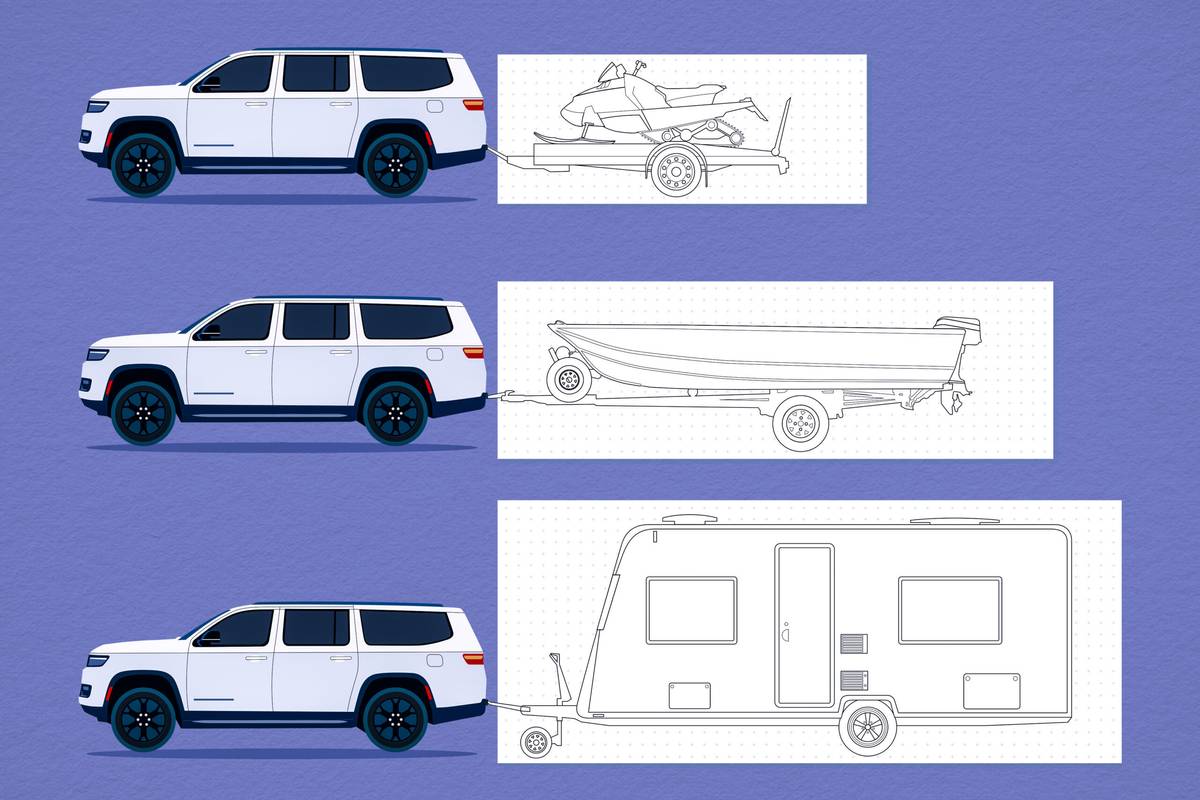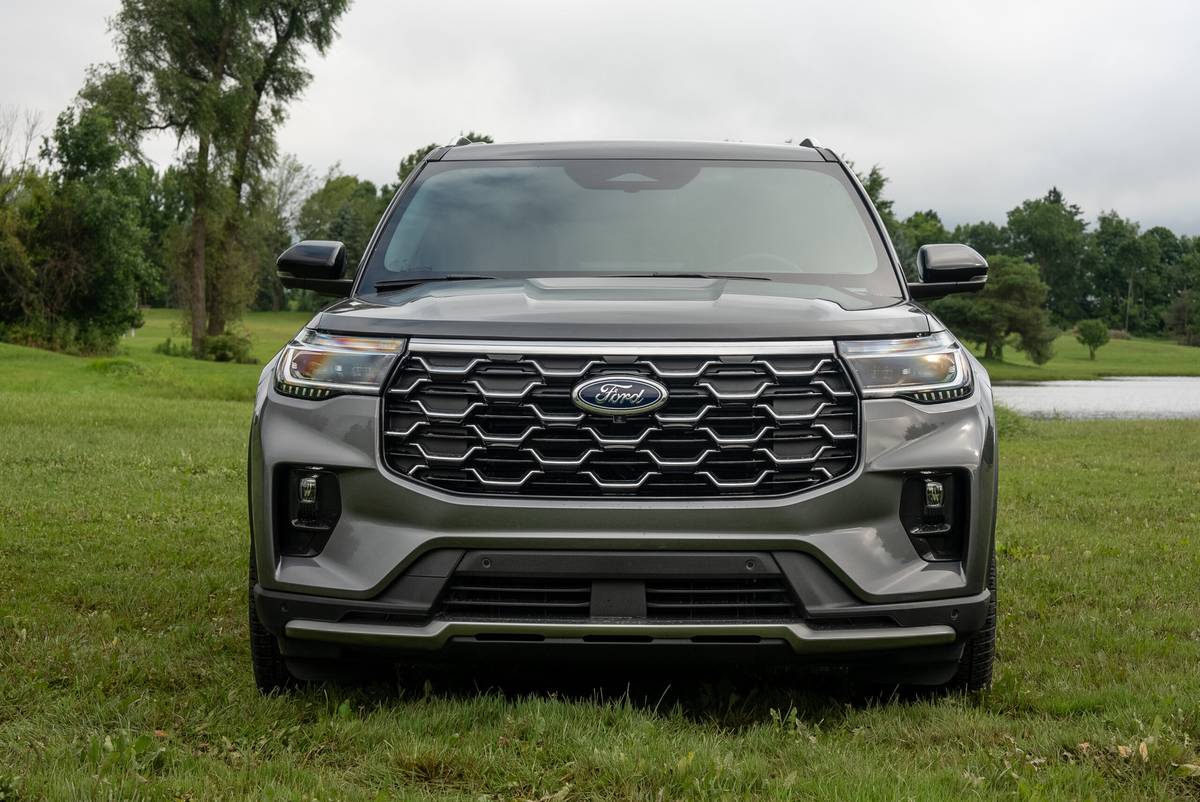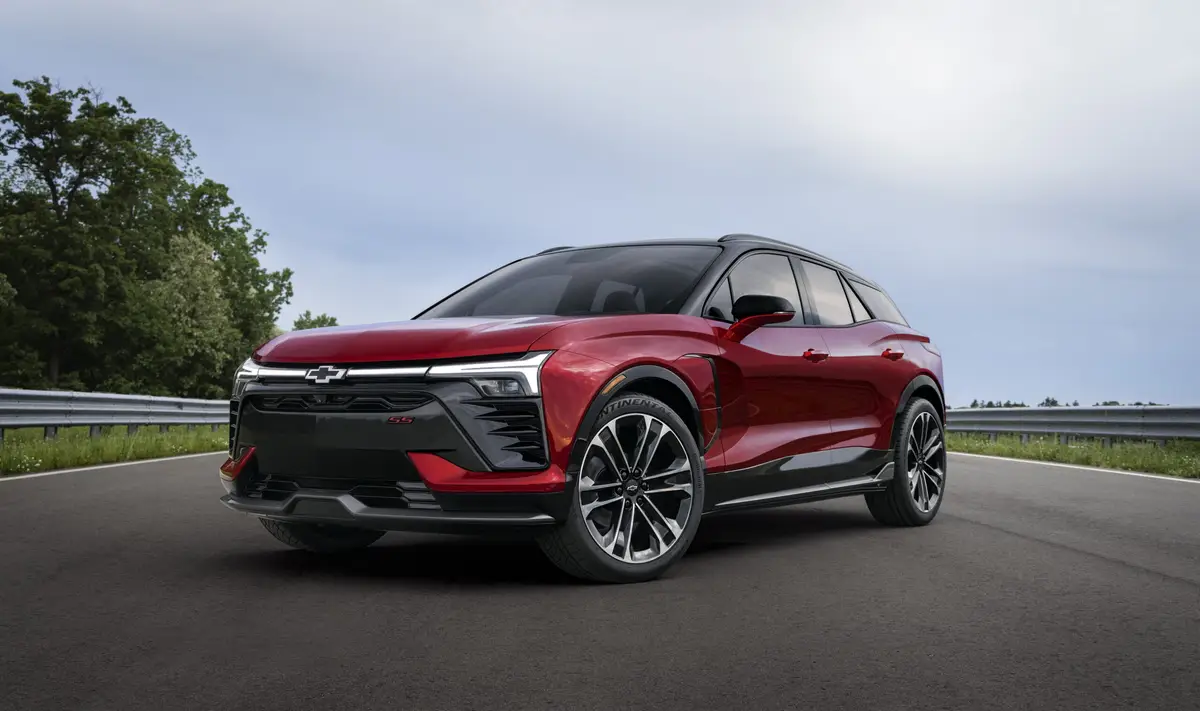First Drive Review: 2011 Ford F-250 Lariat 4x4 Crew Cab - Towing, Part 3
Page: [Previous] [1] [2] [3] [4] [5] [Next]
Diesel 2011 F-250 Lariat4x4 Crew Cab Long Wheelbase Single Rear Wheel — Towing 9,900 pounds
Ford set up a 12-mile towing circuit to test the 6.7-liter V-8 pulling a 9,900-pound enclosed trailer up and down the Yarnell Grade on Arizona Highway 89. It's a well-maintained grade that's a favorite with Ford's engineers. It averages about 7 percent as it twists and turns rising 1,500 feet from the desert floor to the high desert.
Photo by: Sam VarnHagen/Ford Motor Co.
We drove an F-250 Lariat Crew Cab 4×4 SRW with an 8-foot box and 3.55:1 rear axle. Towing 9,900 pounds isn't much of a challenge for this configuration, which has a max conventional trailering capacity of 14,000 pounds and maximum fifth-wheel capacity of 15,700 pounds. Not long ago we might have felt handicapped with such a tall final-drive ratio.
Before starting out, we activated the truck's tow/haul button on the end of the shift stalk. Tow/haul mode holds engine RPMs higher than usual before upshifting to help keep the truck from getting bogged down when it's towing, and it automatically downshifts the truck with a tap of the foot brake, as long as it won't take the engine over the rpm redline.
New plus/minus buttons have been added to the shift stalk for 2011. Hitting the plus button once brought up the gear state display in the new trip computer so that we could see what gear the transmission was in. When we hit the minus button, we locked out the topmost gear of the transmission, starting with sixth. Each additional tap of the minus button locked out the next lower gear, limiting the automatic transmission's gear range. It's a great new feature that Ford calls progressive range select. A similar feature is also available in the 2010 Ram HD pickups, though you won't see the slick and useful gear state display in the Ram HD.
By shifting the truck into manual (or M) mode, you can use the plus/minus buttons like a manual transmission to upshift or downshift the transmission into the gear you want when you want to, as long as you don't take the engine over the redline.
Photo by: Sam VarnHagen/Ford Motor Co.
Merging onto Highway 89 from a full stop was a snap. The tremendous power of the diesel combined with the six-speed 6R140 gearbox's low 3.97:1 first gear made launching truck and trailer easy and without a hint of the rear springs binding up from too much torque. It immediately built confidence in the rig as we stared at the steep climb in front of us.
As we climbed the grade, there was always plenty of torque on tap. Engine response to increased throttle was linear and progressive as the transmission smartly metered all of that power to the rear wheels. Tow/haul mode kept up our momentum even during gear changes. We nearly forgot the trailer was hanging off the back of the truck. We exceeded the speed limit going up the grade without even trying. If traffic had backed up behind us, it wouldn't have been because we had squeezed all we could from the diesel. It would have been stability concerns that prevented us from increasing our speed.
Noise levels in the cab were always reasonable. Ford has tweaked the truck's mechanical cooling fan so that it operated quietly when engaged. That was one less distraction to take our attention off the road and load.
The long-wheelbase Super Duty provided a stable towing platform. Had we needed it, the 2011 Super Duty has added trailer sway control (first introduced in the F-150) to help shut down any unwanted yaw input from a squirrelly trailer to prevent loss of control. It can activate either or both the truck's and trailer's brakes. In the Super Duty, it works with a trailer's electric or hydraulic brakes.
Before we turned around, we tried out the Super Duty's new hill start assist feature on an incline. It holds the truck's brakes up to two seconds after you take your foot off the brake pedal so the vehicle won't roll backward. It works fine, but it would have been a better feature had the truck still had a manual transmission.
Photo by: Sam VarnHagen/Ford Motor Co.
As we headed downhill, we accelerated into fourth gear before tapping the brake pedal to downshift the truck using tow/haul mode. The hill was too twisty, and the combined truck and trailer weight was too high to rely on engine back pressure alone to keep vehicle speed constant the rest of the way down. We played with the transmission's range select capability again to lockout third through sixth gears, so only first and second were available. We also used the manual shift mode to select and hold third gear as long as we could before commanding a downshift with a tap to put us into second gear.The sixth cog on the transmission made sure each downshift was smoother than we'd ever experienced in the old five-speed automatic, thanks to the well-spaced steps between each gear.
The 6.7-liter diesel has an integrated automatic exhaust brake that uses adjustable vanes around the turbo to create additional engine back pressure, but after trying as hard as we could to hear and feel it, we were never able to tell when it was working to help us. Ford's exhaust brake can't be turned on or off like the exhaust brake on the Cummins diesel in the Ram HD.
By the end of the hill, our confidence was higher than at the start. The truck was able to smoothly negotiate the steep and technical grade in both directions without any unexpected behavior affecting the experience. It's an example of Ford at the top of its game.
One other point to mention about the interior of this Lariat-trimmed truck: We liked the new leather seats that feature traditional leather around the border and bolstering and a new distressed-looking leather in the seat and back cushions. It gives the Lariat a richer feel if you're not looking to move all the way up to the King Ranch model.

Featured stories



